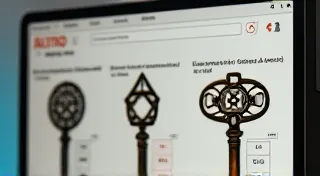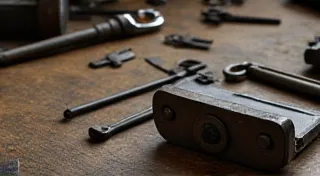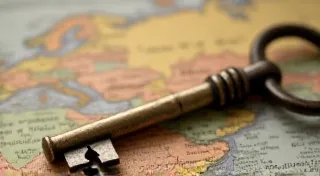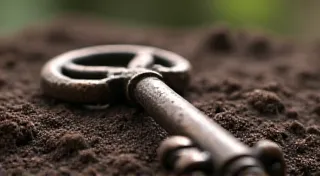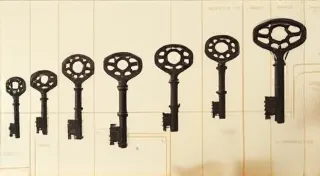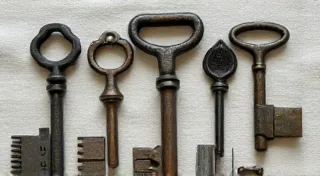Key Fobs: A Brief History and Antique Examples
Key fobs – those small, often decorative attachments to keys – are instantly recognizable today. But their history stretches back surprisingly far, evolving from purely functional items to status symbols and treasured collectibles. Understanding this evolution offers valuable context for appreciating antique keys and key fobs, particularly those rarer examples that surface in the collecting world. It's fascinating to consider how the very concept of access and security, deeply intertwined with the history of keys, has transformed over centuries - a journey explored in more detail on our article, Keys and Security: How Antique Keys Shaped Access Control.
Early Origins: Practicality First
The concept of attaching something to a key isn’t entirely new. Going back centuries, people would tie keys to string or ribbon to prevent them from being lost. However, the true precursor to the modern key fob emerged in the 18th and 19th centuries. Initially, these weren’t the elaborate trinkets we might imagine. They were primarily designed for practicality – to provide a better grip on keys, prevent them from being dropped, and make them easier to locate on a large ring. The story of keys themselves, and the artistry behind their design, is a compelling one, as explored in "From Ward to Bit: The Evolution of Antique Key Designs" – a look at how antique key designs evolved.
Early key fobs were often made of leather, bone, or simple metal rings. Wealthier individuals might have their leather fobs embossed with family crests or initials. These early examples, while not inherently valuable, are increasingly sought after by serious collectors for their historical significance. The significance of keys extends far beyond the practical, often imbued with symbolism rooted in folklore and historical narratives.
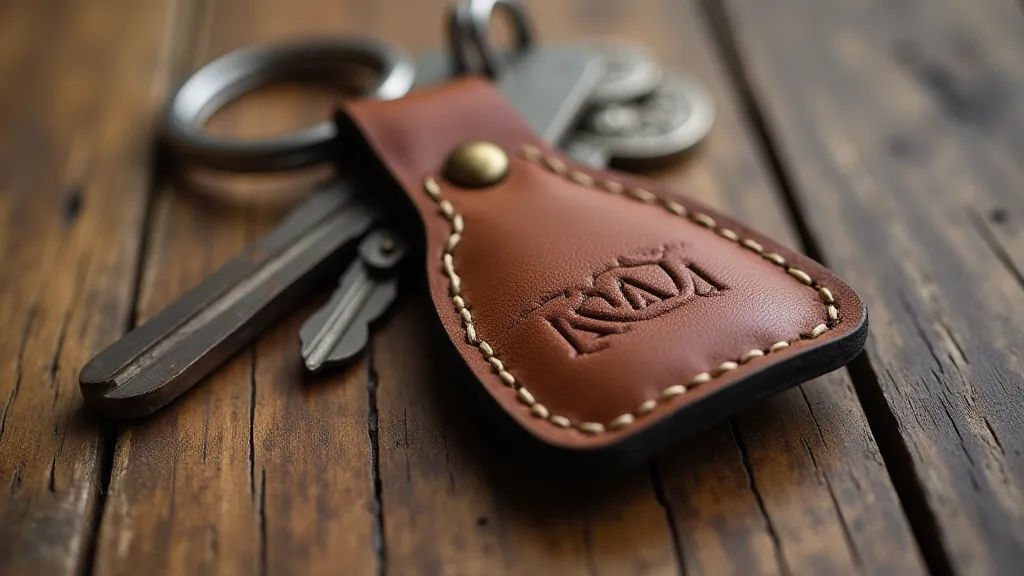
The Victorian Era: Fobs Become Fashionable
The Victorian era (1837-1901) witnessed a significant shift in the role of the key fob. Driven by increasing industrial production and a growing middle class, fobs transformed from simple necessities into fashionable accessories. Mass production of decorative metal fobs – made from silver, gold, and even less expensive base metals – became commonplace. Elaborate designs featuring intricate carvings, enamel work, and gemstone settings became increasingly popular. The Victorian era’s emphasis on ornamentation and status is clearly reflected in the evolution of these small, yet significant, objects.
This period saw the rise of specialized key fob makers, each developing their own signature styles. Fobs were often given as gifts, symbolizing affection, respect, or even commemorating special occasions like weddings or births. This practice speaks to the broader Victorian customs and the importance of symbolic gifts within a social hierarchy.
Materials and Designs: Spotting Antique Examples
Identifying antique key fobs requires careful observation. Here’s a breakdown of common materials and designs to help you distinguish older examples:
- Silver & Gold: These are often the most desirable and valuable. Look for hallmarks indicating the metal content and maker's mark. While reproduction hallmarks exist, careful study can often differentiate genuine antique markings from later fakes. The presence of hallmarks isn't just about identifying the metal; it's a window into the history of assaying and manufacturing processes.
- Base Metals: Fobs made of brass, bronze, or other base metals were more common among the general population. While generally less valuable than silver or gold, they can still be interesting and historically significant. The accessibility of base metals meant they were incorporated into everyday life, becoming a reflection of societal norms.
- Glass & Enamel: Enamel work, particularly colorful and intricate designs, is a hallmark of Victorian key fobs. Look for signs of aging, such as crazing (tiny cracks in the enamel). The artistry of enamel work is a testament to the skills of Victorian craftspeople, transforming seemingly mundane objects into miniature masterpieces.
- Ivory & Bone: These materials were occasionally used, but their use is now heavily regulated due to ethical concerns. The use of ivory and bone in antique objects raises important ethical considerations, highlighting the changing values surrounding historical artifacts.
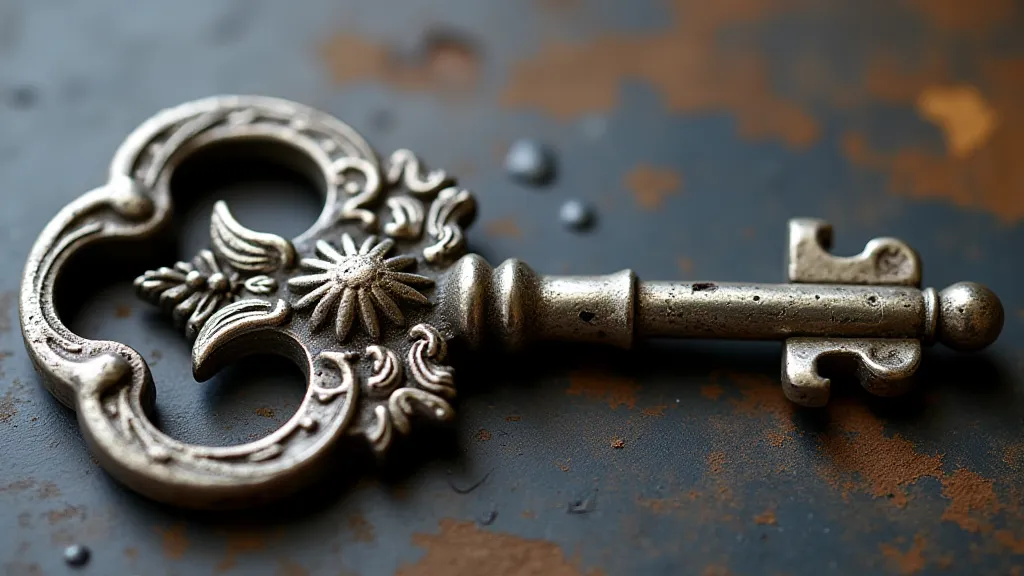
Rarity and Value: What to Look For
Several factors influence the rarity and value of antique key fobs:
- Condition: As with any antique, condition is crucial. While signs of age are expected, excessive wear, damage, or repairs will detract from value. The patina of age can be desirable, but structural issues significantly impact worth.
- Design Complexity: Intricately designed fobs, particularly those featuring rare materials or craftsmanship, are generally more valuable. The level of detail and artistic skill evident in a fob contributes directly to its desirability.
- Maker's Mark: Fobs bearing the marks of well-known or sought-after makers command a premium. Identifying a maker’s mark requires research and expertise, connecting the object to a specific artisan and their legacy.
- Historical Significance: Fobs associated with specific historical events, individuals, or organizations can be highly prized by collectors. A fob’s story is often as valuable as the object itself, providing a tangible link to a past era.
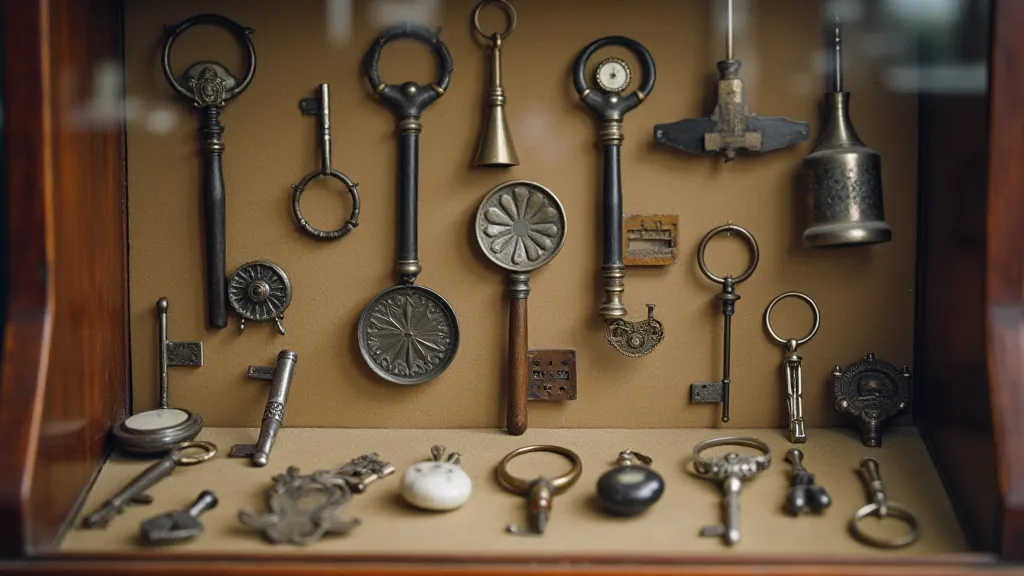
Beyond the Trinket: Symbolic Meanings
It's important to consider the broader symbolism attached to keys and key fobs throughout history. Across cultures, keys have represented access, power, secrets, and safe-keeping. The act of possessing a key signified control and responsibility. Key fobs, as extensions of these essential objects, inherited this powerful symbolism. Exploring the deeper significance of keys, which goes beyond their physical function, adds another layer of appreciation for these antique treasures.
The Collector's Perspective: What to Consider
The antique key fob collecting community is diverse, ranging from casual enthusiasts to serious investors. New collectors often find themselves drawn to the aesthetics, the history, or the challenge of identifying rare examples. Here are a few things to keep in mind when building a collection:
- Research: Familiarize yourself with different styles, makers, and hallmarks. Knowledge is your greatest asset in navigating the market.
- Provenance: A documented history of ownership (provenance) can significantly increase an item’s value.
- Network: Connect with other collectors, attend auctions, and visit antique shows to expand your knowledge and find unique pieces.
Collecting Today
The world of antique key fob collecting is surprisingly vibrant. While rare and valuable examples can fetch significant prices at auction, many beautiful and historically interesting fobs are available at more accessible price points. Whether you’re a seasoned collector or just starting out, exploring the history and aesthetics of these charming objects offers a fascinating glimpse into the past. The allure of these miniature artifacts lies not only in their beauty but also in the stories they hold – whispers of a bygone era waiting to be rediscovered.
